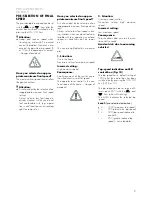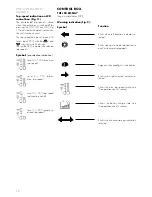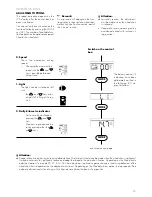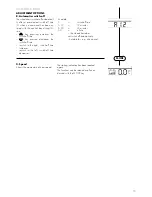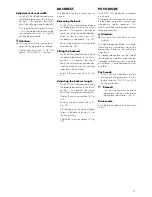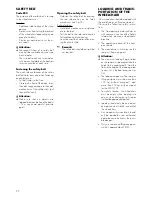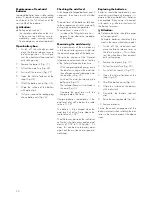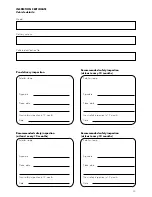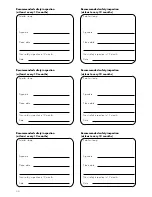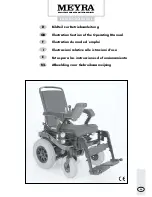
23
Dismantling for transportation
A reduction in the external dimensions of
the wheelchair (Fig. 33) is necessary for
a loading of the wheelchair, e.g. in an
estate car (Fig. 34).
1. Taking off the legrests
Please refer to section entitled
LEGRESTS
2. Removing the armrests
Please refer to section entitled
ARM-
RESTS
3. Removing the back
Please refer to section entitled
BACK
Assembling the wheelchair
The parts removed for the transport must
be re-fitted carefully before the next
drive!
!
Attention:
Never use the wheelchair without fit-
ted armrests and legrests!
Securing the wheelchair for
the transport
!
Attention:
When transporting the wheelchair in
vehicles, you should leave the wheel-
chair and sit on a suitable seat in the
vehicle.
Ensure that only securing systems
complying with DIN 75078 are
used when a transportation in the
wheelchair is unavoidable.
Carry out the following steps when the
wheelchair is located in the transport
vehicle:
– Switch off the wheelchair.
– Put the control box in a safe place or
replace it on the wheelchair.
– Stow all disassembled wheelchair
parts in a secure and protected way.
– Secure the wheelchair by way of
elasticated straps.
– Push the brake release lever [11]
forward as far as it will go.
The lashing straps must only be secured
to the front and rear securing eyes (Fig.
37) of the wheelchair and securing
points intended for such purpose in the
car.
+
Remark:
Suitable fixing points can usually be
found in the car and in the vehicle
operating manual.
Before transporting the wheel-
chair, ask your car dealer how to
secure it without risk to the existing
fixtures or other safety fittings!
Using loose ramps
Only load the wheelchair without occu-
pant and after removing the control
box.
If necessary, fold down or remove the
back!
Special safety instructions for
using ramps
• Ensure that the wheelchair can roll
back for a short distance (neutral
zone) if forward motion on the ramp
is interrupted or when setting in mo-
tion at the bottom of the ramp.
• Cars and vans should be parked on
a level and firm surface with the
handbrake on to prevent them from
rolling away.
• Ramps should be placed on the
ground and vehicle in such a way that
they cannot slip.
• Ramps should be positioned so as to
leave enough space for wheelchair
steering correction without one of the
wheels protruding over the edge of
the ramp.
• Only use the wheelchair on dry,
clean and undamaged ramps or lift-
ing equipment.
• Select the minimum final speed.
Observe item '6. Pre-selection of top
speed' in the 'Pre-operation checks' sec-
tion.
+
Remark:
Only use the traverse bar (A, Fig.
35) and the rear drive wheels
[10] for lifting and manoeuvring
the wheelchair. – See also the
'Folding/unfolding' section.

